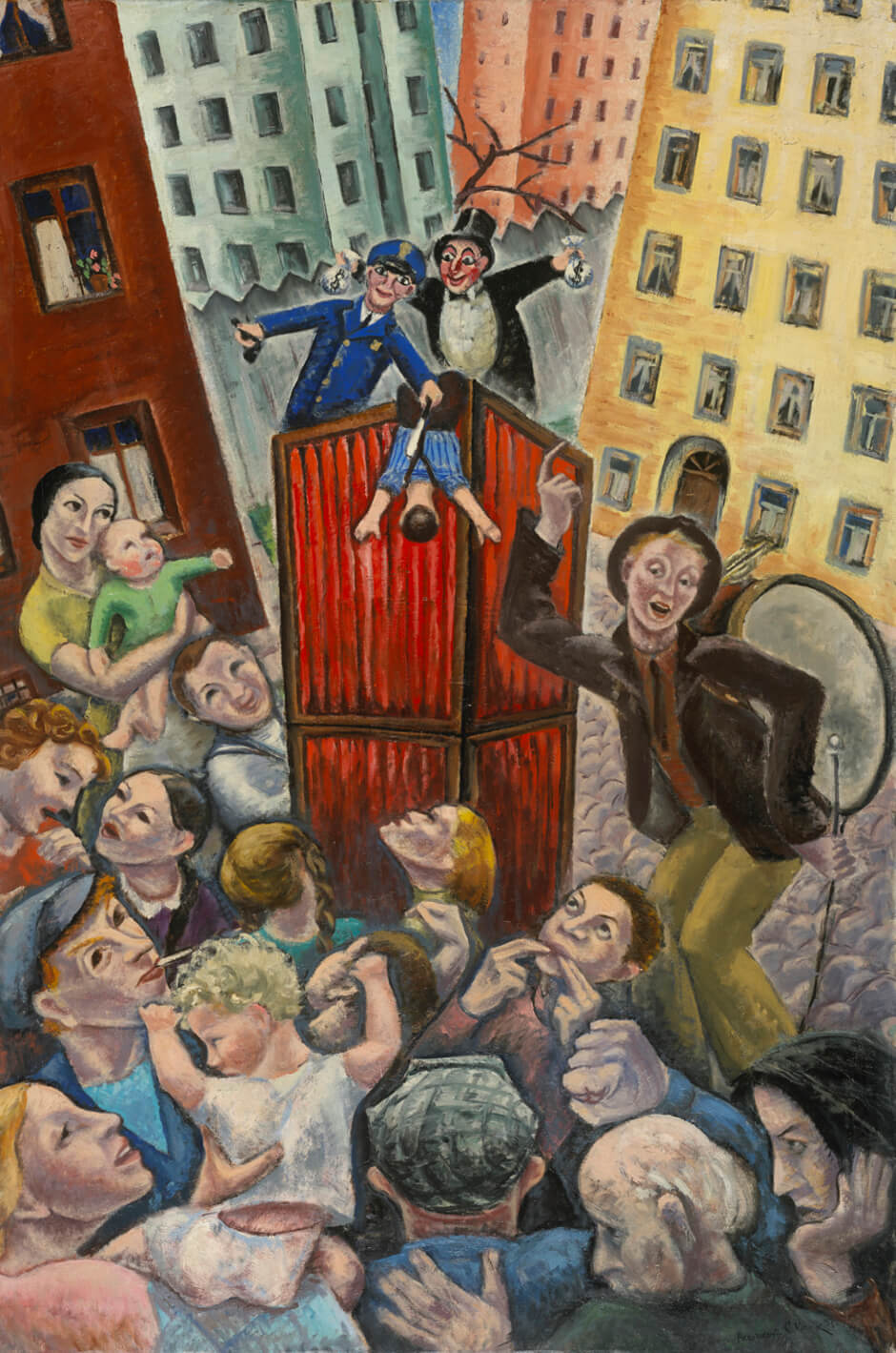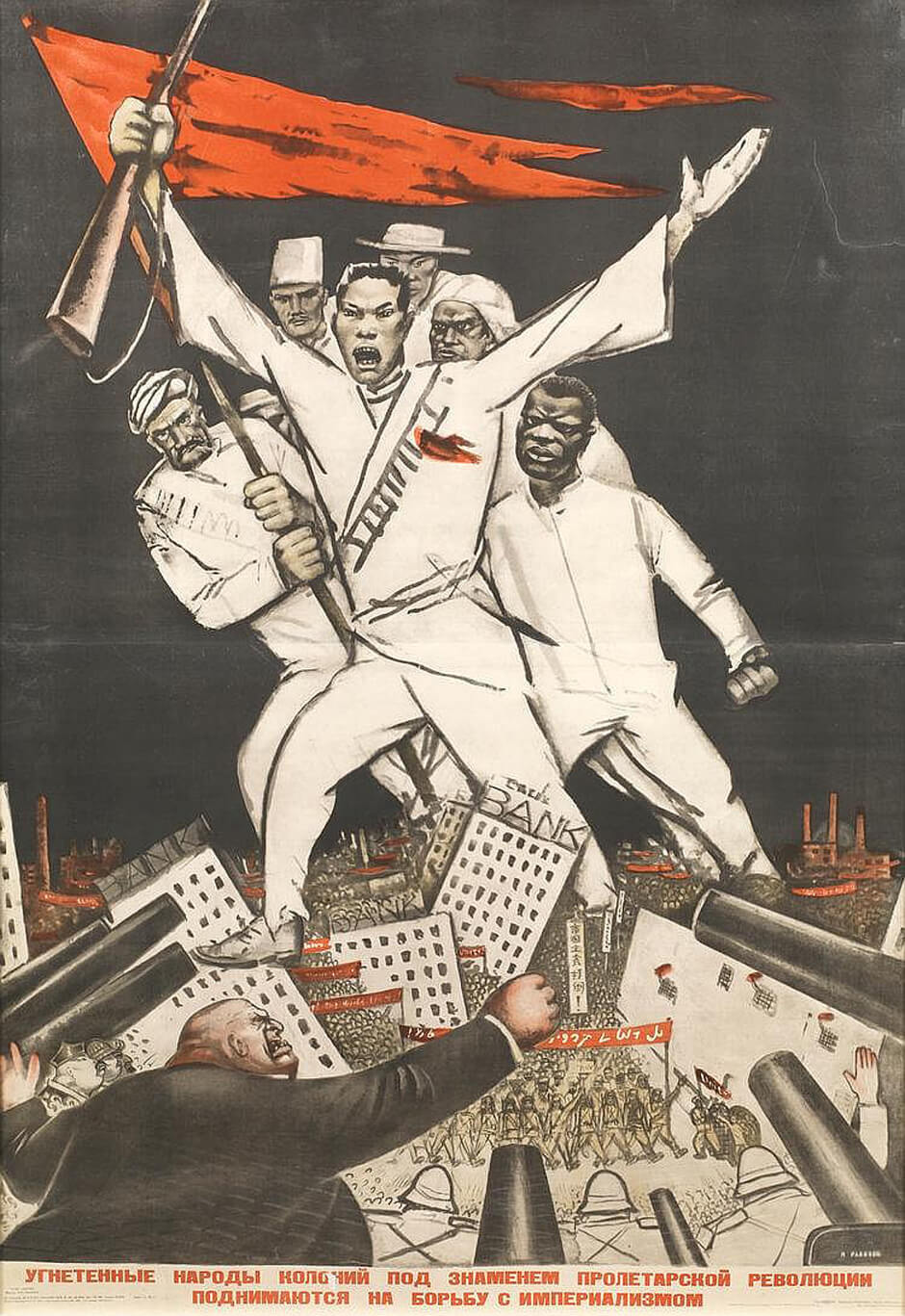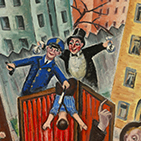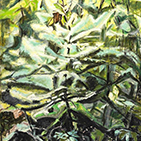Petroushka 1937

Paraskeva Clark, Petroushka, 1937
Oil on canvas, 122.4 x 81.9 cm
National Gallery of Canada, Ottawa


Petroushka, which Clark considered her most important painting, represents her first attempt at a large figural composition with political content and exemplifies the direction in which she wished to develop her work.
Petroushka is a work of strong social commentary whose source is veiled. It brings together Clark’s childhood memories of puppet theatre in the streets of Saint Petersburg and her response to a violent clash between police and striking steelworkers in Chicago in which five workers were killed. Clark taped the article (“Five Steel Strikers Killed in Clash with Chicago Police,” Toronto Daily Star, June 1, 1937) to the back of the canvas to document the source. She transformed the story of Petroushka (the Russian equivalent of Punch or Pulchinello) to describe the plight of the worker, subjugated by the interests of capitalism (the banker) and its enforcers (policeman). The viewer looks down on the scene in a cobblestoned yard between apartment blocks. The crowd responds to the performance with catcalls and clenched fists—an anti-fascist symbol of unity, strength, and resistance used here to indicate the artist’s support for their cause. Two preparatory sketches, including Study for Petroushka, 1937, illustrate the evolution of the painting.
The visual sources of Petroushka go beyond the artist’s childhood memories of puppet shows. She includes herself on the far left holding a young child (possibly Ben), silhouetted against a building—perhaps a reference to Year 1918 in Petrograd, 1920, by Kuzma Petrov-Vodkin (1878–1939), her teacher at the time he painted it. It is likely that additional sources included the political posters illustrated in Iskusstvo 4 (1933), one of the Russian art magazines Clark acquired in the autumn of 1936: Vladimir Ilyich Lenin (1870–1924) Addressing the Red Army of Workers on 5th May 1920, 1933, by Isaak Brodsky (1883–1939) and Les peuples opprimés des colonies sous le drapeau de la révolution prolétarienne se lèvent pour la lutte contre l’impérialisme, 1932, by Feodor Rabitchev (1894–1961), in which the people topple buildings in their march against capitalism.
Clark had high expectations for Petroushka. She first showed it at the Canadian Group of Painters exhibition in 1937, along with Wheat Field, 1936, and Bathing the Horse, 1937, a troika of Russian-inspired work. It remained in her possession until the National Gallery purchased it in 1976.

 About the Author
About the Author
 More Online Art Books
More Online Art Books
 Acknowledgements
Acknowledgements